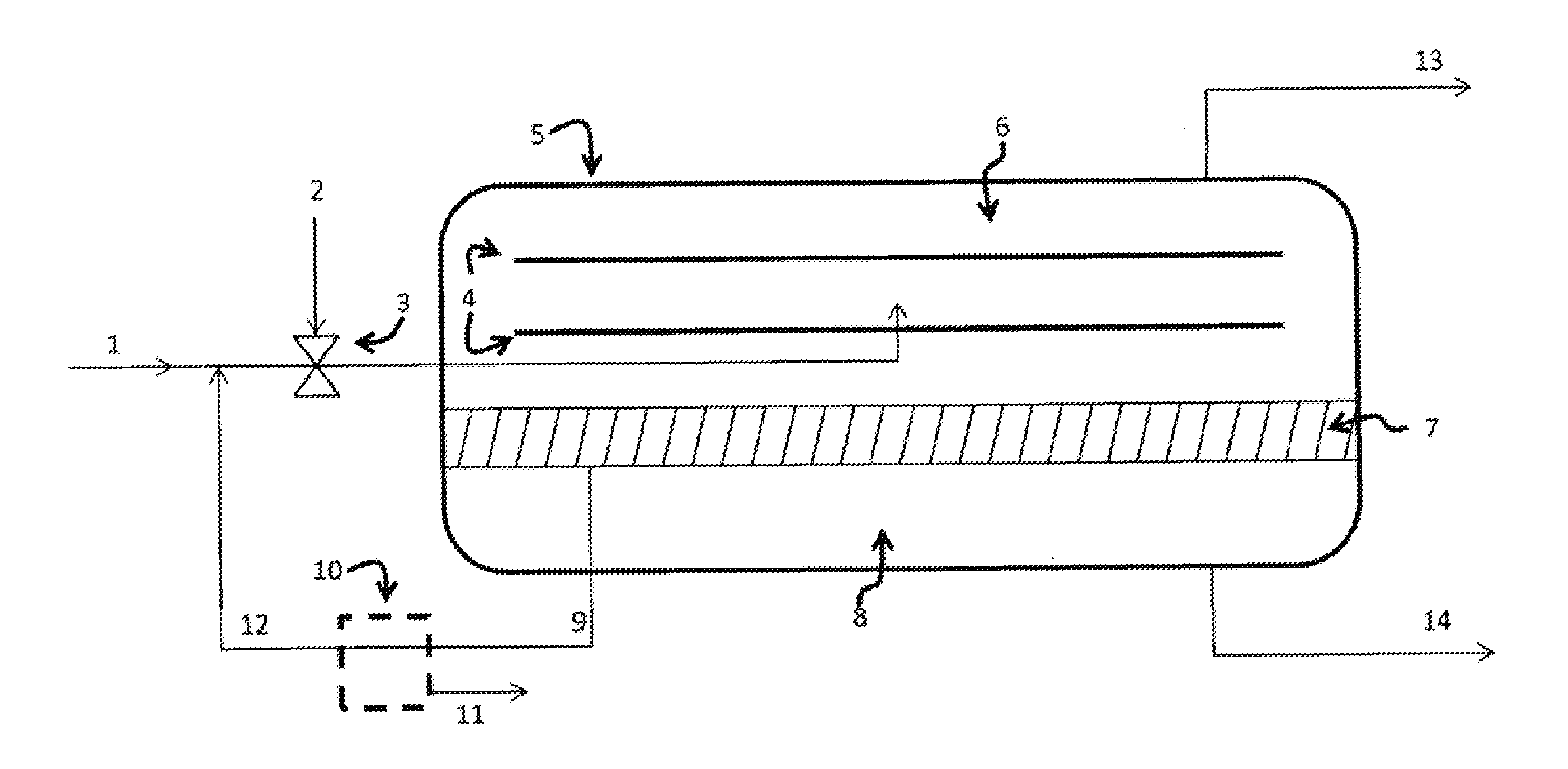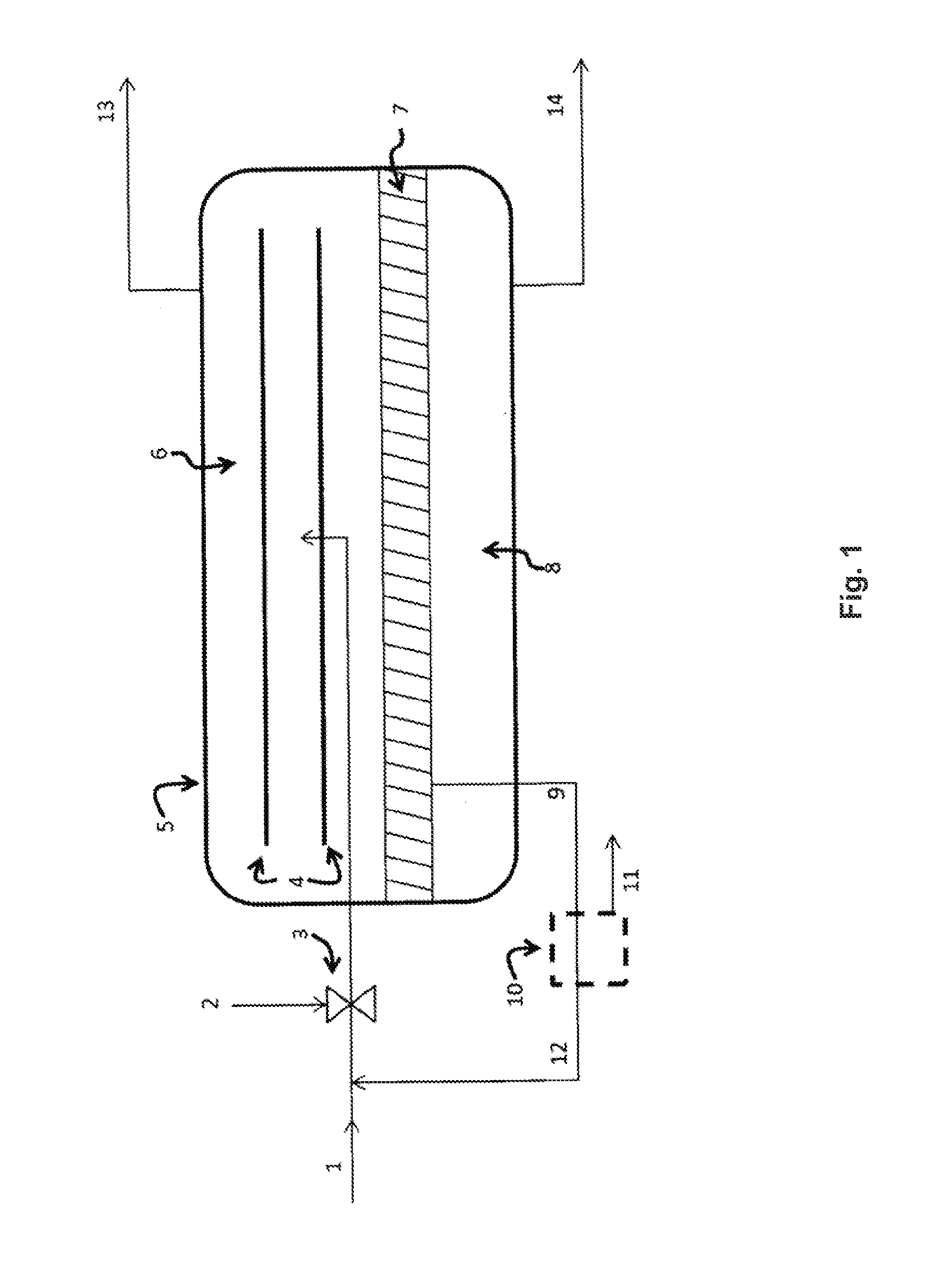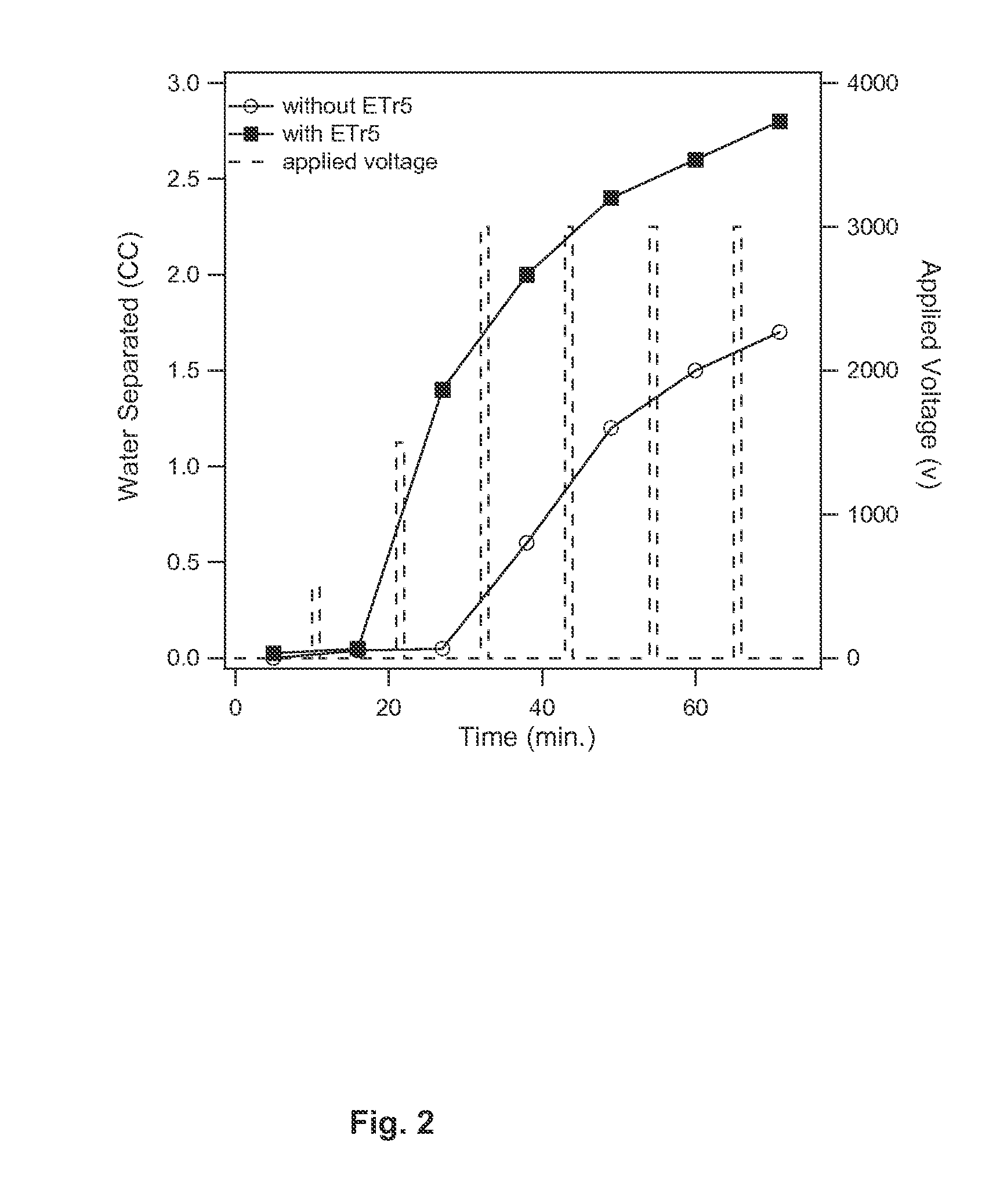Desalter emulsion separation by emulsion recycle
- Summary
- Abstract
- Description
- Claims
- Application Information
AI Technical Summary
Benefits of technology
Problems solved by technology
Method used
Image
Examples
example 1
Water Separation in the Absence of Recycled Stable Emulsion
[0043]Adequate amounts of salt water (3% NaCl) and of a crude oil A were heated to 85° C. 50 ppm of a commercial demulsifier B was added to 90 mL of preheated crude oil and mixed well. 4 mL of the preheated salt water was added to the oil and blended for 10 seconds at half full power (i.e. 60V setting on a Variac) using a Waring™ blender to generate a water-in-oil emulsion. 75 mL of the emulsion was then poured into a transparent vessel of an Electrostatic Dehydration and Precipitation Tester (EDPT) from Inter AV Inc. which was preheated to 90° C. The vessel's cap was tightened and temperature was then increased to 120° C.
[0044]Voltages of 500, 1500, and 3000 V for duration of one minute were applied at 10, 21, and 33 minutes after the EDPT reached 120° C., respectively. A voltage of 3000 V was applied for one minute at 44, 55, and 66 minutes after the EDPT reached 120° C. The amount of the effluent water at the bottom of th...
example 2
Water Separation in the Presence of the Recycled Stable Emulsion
[0046]Adequate amounts of salt water (3% NaCl), crude oil A, and a stable emulsion designated ETr5 taken from a tricock of a commercial desalter that used crude oil A, were heated to 85° C. 50 ppm of a commercial demulsifier B was added to 90 mL of preheated crude oil and mixed well. 4 mL of the preheated salt water and 2 mL of the preheated stable emulsion was added to the oil solution and blended for 10 seconds at half full power using a Waring blender to generate a water-in-oil emulsion. 75 mL of the prepared emulsion was then poured in a transparent vessel of the Electrostatic Dehydration and Precipitation Tester (EDPT) from Inter AV Inc. preheated to 90° C. The vessel's cap was tightened and the temperature increased to 120° C. Voltages of 500, 1500 and 3000 V were applied for one minute at 12, 23, and 34 minutes after the EDPT reached 120° C., respectively. A voltage of 3000 V was applied for one minute at 45, 56,...
example 3
Water Separation in the Absence of the Recycled Stable Emulsion
[0049]Adequate amounts of deionized (DI) water and crude oil A were heated to 85° C. 50 ppm of commercial demulsifier B was added to 90 mL of preheated crude oil and mixed well. 4 mL of the preheated DI water was added to the said solution and blended for 10 seconds at half full power using a Waring blender to generate a water-in-oil emulsion. 75 mL of this emulsion was poured into a transparent vessel of the Electrostatic Dehydration and Precipitation Tester (EDPT) preheated to 90° C. The vessel's cap was tightened and temperature was then increased to 120° C.
[0050]Voltages of 500, 1500 and 3000 V were applied for one minute at 10, 21, and 33 minutes after the EDPT reached 120° C., respectively. A voltage of 3000 V was applied for one minute at 44, 55, and 66 minutes after the EDPT reached 120° C. The amount of the effluent water at the bottom of the vessel was measured at 5, 16, 27, 39, 50, 61 and 72 minutes after the ...
PUM
 Login to View More
Login to View More Abstract
Description
Claims
Application Information
 Login to View More
Login to View More - R&D
- Intellectual Property
- Life Sciences
- Materials
- Tech Scout
- Unparalleled Data Quality
- Higher Quality Content
- 60% Fewer Hallucinations
Browse by: Latest US Patents, China's latest patents, Technical Efficacy Thesaurus, Application Domain, Technology Topic, Popular Technical Reports.
© 2025 PatSnap. All rights reserved.Legal|Privacy policy|Modern Slavery Act Transparency Statement|Sitemap|About US| Contact US: help@patsnap.com



